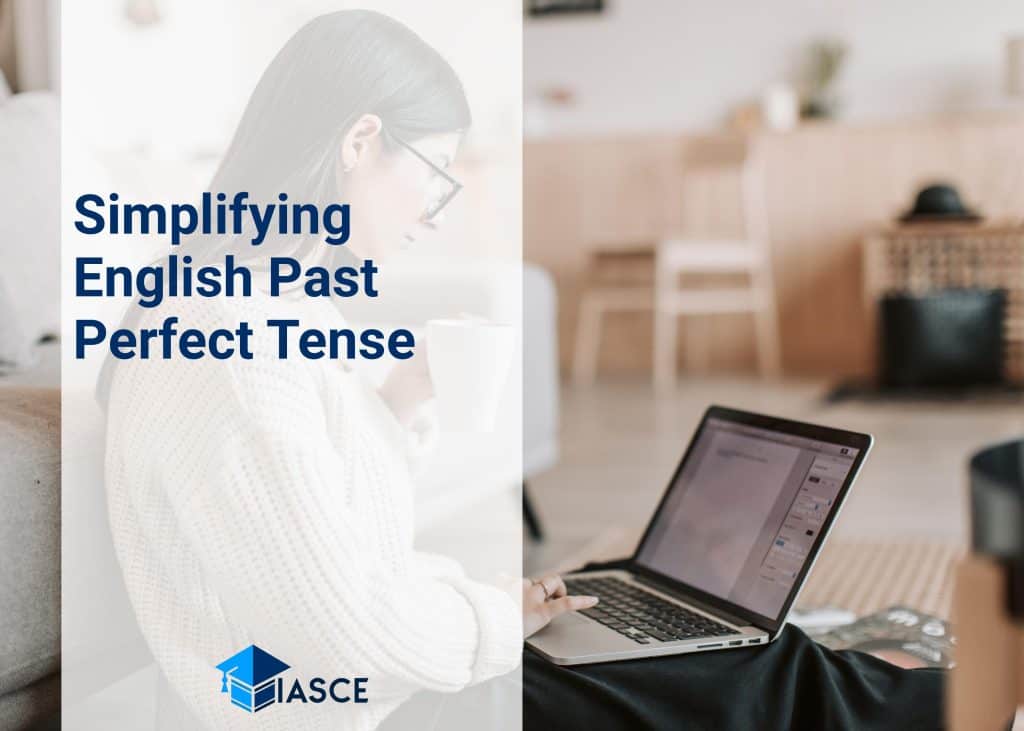Ever scratch your head over the past perfect tense in English? Trust me, you’re not alone. This grammatical beast has tied many language learners in knots. But don’t fret! I’m here to unravel this complex structure and make it easy for you.
The past perfect tense can seem intimidating, but it’s actually a powerful tool that can elevate your English skills. It’s all about timing, specifically events that have happened before something else in the past.
Stay tuned as we delve into the heart of past perfect tense – its formation, usage, and some nifty examples to solidify your understanding. Let’s conquer this grammatical challenge together!
Understanding the Past Perfect Tense
Let’s dive right into one of English language’s intriguing aspects – the past perfect tense. It’s a grammatical construction that often seems puzzling, but I’ll break it down for you in this guide.
First off, what is it? The past perfect tense describes an action or situation that occurred before another past event. It consists of ‘had’ plus the past participle of a verb (like ‘eaten’, ‘seen’, or ‘done’).
Now, why would we need to use it? Well, imagine you’re telling a story about yesterday and want to refer back to something that happened even earlier. That’s where the past perfect comes in handy! For instance: “I had just finished dinner when my friend called.”
There are also specific situations where using the past perfect makes your sentence clearer:
- After certain words: After conjunctions like ‘after’, ‘before’, and ‘once’, using the past perfect can avoid confusion. Example: “After he had practiced for months, John finally nailed his guitar solo.”
- With conditional sentences: If you’re talking hypothetically about something in the past not happening, you’d use the past perfect in your if-clause. Example: “If I hadn’t forgotten my wallet, we could’ve eaten out.”
And how about some common errors to watch out for?
- Mistaking simple past for past perfect: Sometimes we confuse these two tenses. Remember, if there’s no reference to another event in the sentence, stick with simple past.
- Incorrect word order: Keep in mind it’s ‘had’ followed by a verb’s past participle.
To help illustrate these points better:
| Incorrect | Correct |
|---|---|
| “I done my homework before mom arrived.” | “I had done my homework before mom arrived.” |
| “She have seen that movie three times already.” | “She had seen that movie three times already.” |
So there you have it – an overview of understanding and correctly applying the English language’s Past Perfect Tense!
Practical Applications of the Past Perfect Tense
Diving into English grammar, it’s impossible to ignore the significance of the past perfect tense. In my everyday interactions and writings, I’ve found this particular grammatical construct to be remarkably useful.
One of its chief uses is in conveying a sequence of events that occurred in the past. The past perfect tense helps to establish a clear timeline when discussing multiple occurrences. For example:
- I had finished my homework before mom called for dinner.
- By the time we arrived at the concert, they had already started playing.
Another practical application is in reported speech or indirect speech. This comes handy especially when you’re recounting something someone else said or thought in the past. Check out these examples:
- He said he had seen that movie before.
- She thought she had lost her keys.
In addition to these applications, there’s also an emotional aspect associated with using the past perfect tense. It often implies regret or hindsight about something that happened (or didn’t happen) before another event took place.
Here are few instances where this sentiment might come across:
- If only I hadn’t eaten that second slice of cake!
- I wish we’d brought an umbrella.
Surely you can now see how versatile and practical this tense is! From articulating timelines and recounting conversations, to expressing emotions – it’s got you covered!
There’s no denying it: mastering the use of past perfect tense can truly elevate your English language skills. So go ahead and give it a try!
Conclusion: Mastering the Past Perfect Tense
I’ll let you in on a little secret. Mastering the past perfect tense isn’t as daunting as it might seem at first. It’s all about practice, understanding, and incorporating it into your everyday language.
First off, remember what we’ve discussed so far – the past perfect tense is used to describe an action that occurred before another past action or event. It’s typically structured with “had” followed by a past participle verb. Sounds simple enough, right?
To really cement this in your mind, let’s look at some examples:
| Sentence | Explanation |
|---|---|
| I had finished my homework by 6 PM. | The act of finishing homework happened before 6 PM. |
| By the time she arrived, everyone else had already left. | The leaving of everyone else took place before her arrival. |
These sentences illustrate how handy the past perfect can be when sequencing events or actions in a narrative.
Now don’t get me wrong; mastering any grammatical concept takes time and patience. But I believe with these tips up your sleeve, you’re well on your way to getting a firm grasp on the past perfect tense.
Here are some quick pointers to keep in mind:
- Always pair ‘had’ with a past participle verb.
- Use it to indicate sequence of events.
- Practice makes perfect! Write and speak using this tense regularly.
The beauty of English lies not just in its vast vocabulary but also its complex tenses that allow for precise expression of timing and sequence. The more comfortable you become with things like the past perfect tense, the more nuanced and effective your communication will be.
Keep practicing! Your journey towards becoming an expert in English grammar is well underway!

